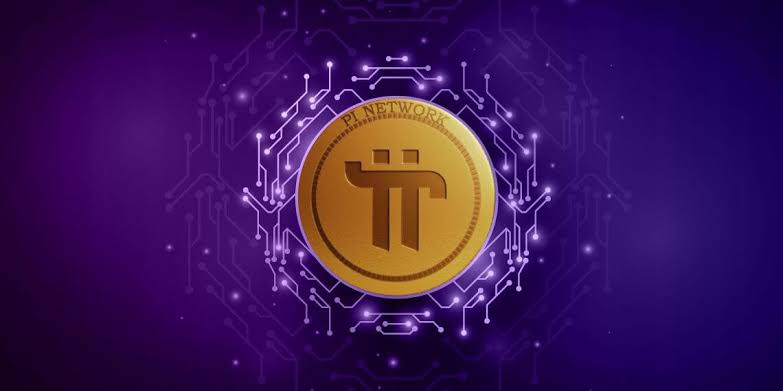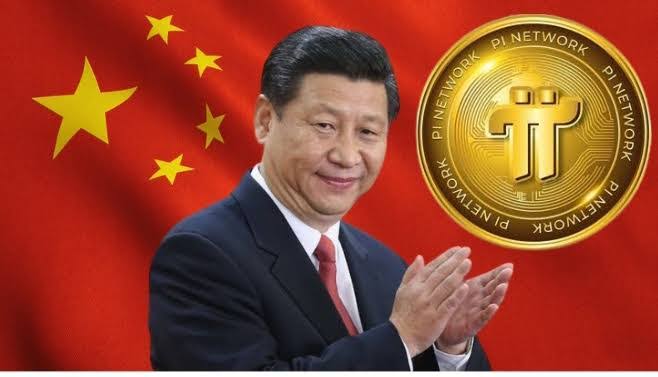The Pi Network, known for its unique approach to mobile mining and accessible cryptocurrency, has garnered attention within the crypto community. One of the main indicators for Pi’s future market potential is its IOU (I Owe You) price, which reflects anticipated value and demand before the Open Mainnet (OM) launch. IOUs are often seen in crypto markets as a placeholder or prediction for the value of an asset that has yet to be fully realized or traded on mainstream exchanges. In Pi’s case, the IOU is viewed as a reliable barometer for potential value, albeit with an error margin of around +/- 20%.
As of now, Pi’s IOU price hovers around $50, and it has seen significant highs, peaking at around $330. Many users and enthusiasts believe that the IOU price has the potential to rise dramatically with strategic announcements or partnerships. In this article, we’ll delve into the factors that could influence the Pi IOU price trajectory, examine how partnerships with major corporations could impact its value, and offer predictions for the Open Mainnet launch and beyond.
Understanding the Pi IOU Price and Its Significance
The Pi IOU price represents the current speculative value of Pi tokens as they circulate in non-traditional markets. As Pi remains in its Enclosed Mainnet phase, users cannot yet trade Pi on open exchanges, meaning that any direct buying and selling of Pi for fiat or other cryptocurrencies is not permitted by the Pi Core Team (CT). Instead, IOUs act as a placeholder on certain platforms, where traders exchange tokens that will represent real Pi after the Open Mainnet launch. This price is highly speculative and is influenced by factors such as community sentiment, project updates, and anticipated adoption levels.
While speculative, the Pi IOU serves as a valuable gauge for understanding market expectations. With the current IOU price at around $50 and an approximate error margin of +/- 20%, we can assume that the community holds a relatively optimistic outlook for Pi. This is particularly notable because the IOU price has shown resilience, even as the crypto market faces downturns, indicating confidence among Pi Network’s user base.
Key Factors Impacting Pi IOU Price
The price trajectory of Pi’s IOU is subject to a variety of factors, many of which center on announcements, partnerships, and broader market trends. Let’s look at some of the most influential factors:
- Announcements from the Pi Core Team (CT): The CT’s decisions, including details about Pi’s Open Mainnet launch date, partnerships, or technological advancements, could substantially impact the IOU price. Clear communication from the CT regarding timelines or milestones instills confidence within the Pi community, thereby bolstering demand.
- Major Corporate Partnerships: Speculation is rife that partnerships with influential companies—like Amazon, Alibaba, or Tesla—could lead to substantial price increases. These companies have enormous customer bases and advanced technological infrastructures that would complement Pi’s mission of providing utility through decentralized applications. A partnership announcement would likely push the IOU price up significantly, possibly exceeding $200 ahead of the OM launch.
- Market Sentiment and Global Economic Conditions: As with all cryptocurrencies, the IOU price is heavily influenced by the overall sentiment in the crypto market. Positive trends and increasing institutional interest in blockchain technology support higher valuations. Additionally, macroeconomic factors, such as geopolitical developments and political events, could impact investor sentiment. For example, the anticipation of a Trump re-election by 2025 could potentially influence market stability, indirectly affecting Pi’s valuation trajectory.
- Adoption and Utility within the Pi Ecosystem: A growing Pi Network ecosystem, with applications and marketplaces accepting Pi tokens, could provide further utility, driving demand and, therefore, price appreciation. If the ecosystem proves successful and popular among users, it could encourage more people to purchase Pi, boosting demand.
- Open Mainnet Launch and Exchange Listings: One of the most significant events for the Pi Network will be its Open Mainnet launch, which would allow Pi to be listed on popular exchanges like Binance, Coinbase, and Kraken. The Open Mainnet would provide direct liquidity for Pi tokens and likely lead to an influx of buyers.
Projected Price Movements: Short-Term, Post-Launch, and Long-Term
1. Short-Term Projections: IOU Price Pre-Open Mainnet Launch
If the CT were to announce a major partnership or offer details on strategic initiatives before the Open Mainnet launch, Pi’s IOU price could see a rapid increase. Currently, with an IOU price holding steady around $50, such announcements could drive the price to exceed $200 as speculative demand rises. This figure reflects the community’s optimism, as well as the anticipated demand from external parties who may want to buy into the token early, even at a premium.
2. Post-Open Mainnet Launch (First Week)
Following the Open Mainnet launch, demand for Pi is expected to surge, as accessibility through major exchanges would allow traditional investors and the broader crypto community to trade Pi directly. Given the current momentum, it is reasonable to predict that the minimum price for Pi could start around $50, with the potential to reach up to $300 during the first week post-launch, as speculative demand collides with actual liquidity on exchanges.
This launch will provide investors a chance to “cash out” or trade Pi freely, leading to a clearer market valuation. The increased liquidity and accessibility will also allow for real-time price discovery, making Pi’s valuation more responsive to actual utility and market dynamics.
3. Long-Term Projections by 2025
For those looking at Pi as a long-term investment, the next few years could hold considerable growth potential. Assuming that the Pi Network gains a strong user base, sees high adoption rates within its ecosystem, and potentially collaborates with major brands or institutions, the coin’s price could reach significant highs. By the end of 2025, projections indicate that Pi could be valued upwards of $1,000.
A large part of this valuation increase would likely come from broader adoption within the Pi ecosystem. Pi Network’s utilities, such as marketplaces and decentralized applications (dApps), could support a stable, ongoing demand for Pi as a transactional currency. Furthermore, any positive economic developments—such as a Trump re-election, which could affect crypto market sentiment—could amplify Pi’s growth trajectory, as investors see digital currencies as more attractive during periods of traditional market fluctuation.
The Potential Role of the Pi Ecosystem in Sustaining Value
One of Pi Network’s unique strengths is its vibrant ecosystem of decentralized applications and marketplaces. This ecosystem could significantly impact Pi’s long-term valuation by providing real-world utility, which is crucial for maintaining value in the volatile cryptocurrency market.
If Pi tokens become widely used within this ecosystem, the demand for Pi as a currency for goods, services, and digital assets could add intrinsic value beyond speculative trading. As these applications gain traction and users spend Pi tokens within the network, the supply and demand dynamics would support a more stable and sustainable valuation.
Furthermore, successful integration of Pi into everyday transactions and decentralized applications would set Pi apart from other cryptocurrencies, enabling it to retain demand and relevance. The network’s focus on decentralized applications and utility-based use cases could serve as a model for future cryptocurrencies seeking long-term adoption and stability.
Risks and Considerations
While the projections for Pi are optimistic, there are risks to consider, as with any emerging technology or cryptocurrency:
- Delay in Open Mainnet Launch: Any delays in the launch could negatively impact the IOU price, as investors may lose confidence or become impatient.
- Competition from Other Cryptocurrencies: Pi faces competition from more established cryptocurrencies like Bitcoin, Ethereum, and other networks aiming to provide decentralized solutions. If these competitors implement similar technologies or partnerships, Pi may struggle to stand out.
- Regulatory Hurdles: As Pi gains visibility, it may attract regulatory scrutiny, especially if it achieves mass adoption. Regulatory challenges could impact the network’s functionality, user base, or valuation.
- Ecosystem Adoption Rate: While the Pi Network has a strong following, the success of its ecosystem hinges on users actively participating and utilizing Pi for transactions within the network. Slow adoption rates or lack of interest in Pi-based applications could impact its long-term sustainability.
Conclusion: Is the Pi IOU Price a Reliable Indicator?
The Pi IOU price has proven itself as a relatively steady indicator of the network’s perceived value, with fluctuations that reflect the community’s expectations and market sentiment. While the +/- 20% margin of error reflects the inherent volatility of such a speculative price, the Pi IOU provides a valuable baseline for understanding potential market behavior ahead of the Open Mainnet launch.
With a strong network effect, potential partnerships, and a well-developed ecosystem, the Pi Network could be positioned for significant growth. Short-term IOU price fluctuations offer a glimpse into the enthusiasm surrounding Pi’s future, but the Open Mainnet launch will provide a more concrete measure of Pi’s market value. Should the Pi Core Team strategically secure partnerships with corporations like Amazon, Alibaba, or Tesla, it could lead to substantial IOU price increases and a promising start for Pi post-launch.
As we move toward 2025, Pi’s value will ultimately depend on its success in creating real-world utility, fostering an active ecosystem, and navigating the challenges associated with the rapidly evolving crypto market. If Pi can achieve these milestones, its potential to reach $1,000 or beyond could indeed become a reality, solidifying its place in the digital economy for years to come. Continue Reading
















